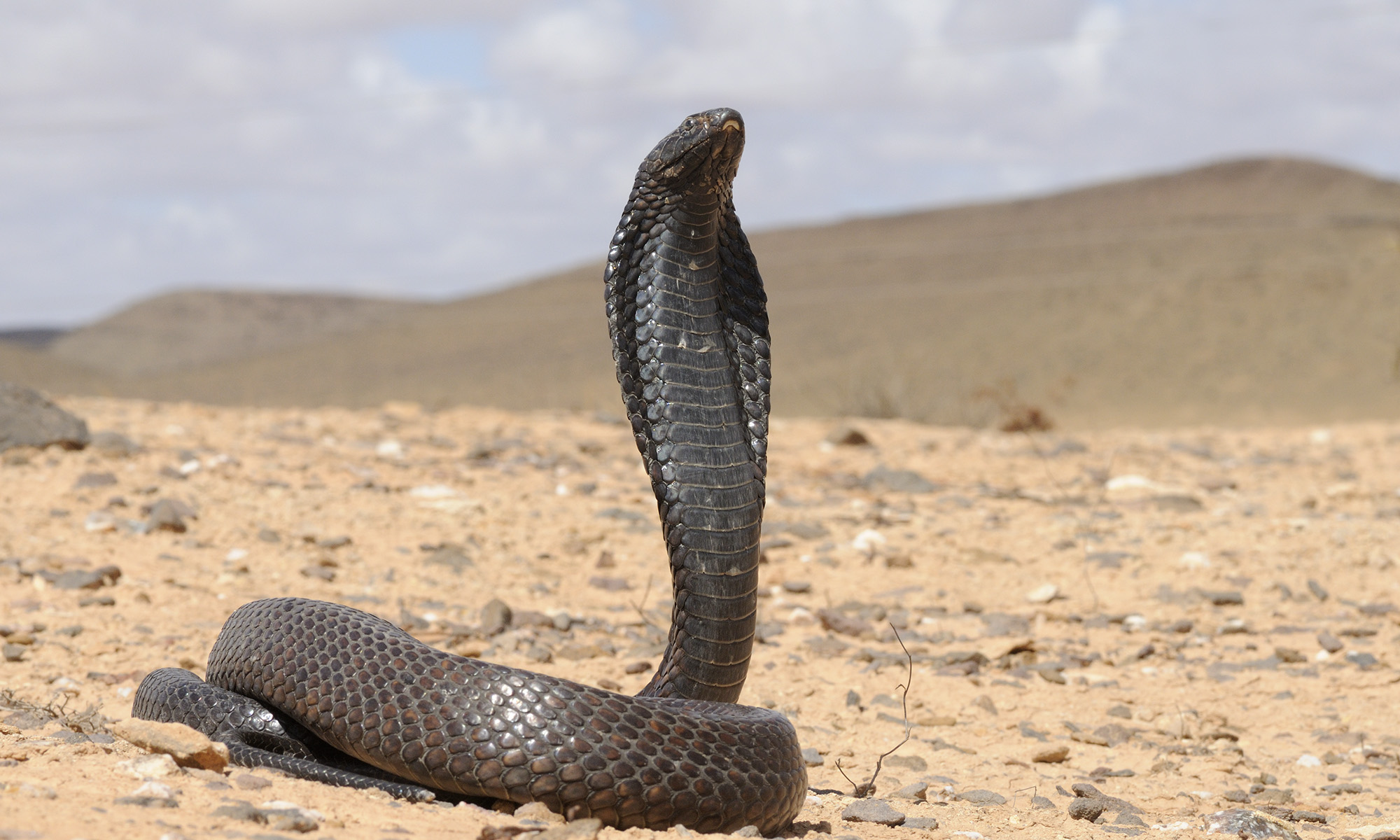Mountain Viper
Vipera monticola Saint Girons, 1953
Por Gabriel Martínez del Mármol
Updated: 6/10/2023
Taxonomy: Serpentes | Viperidae | Vipera | Vipera monticola
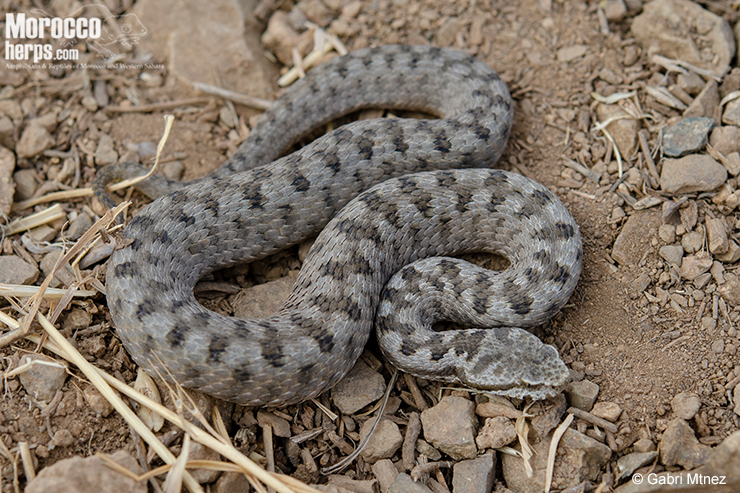
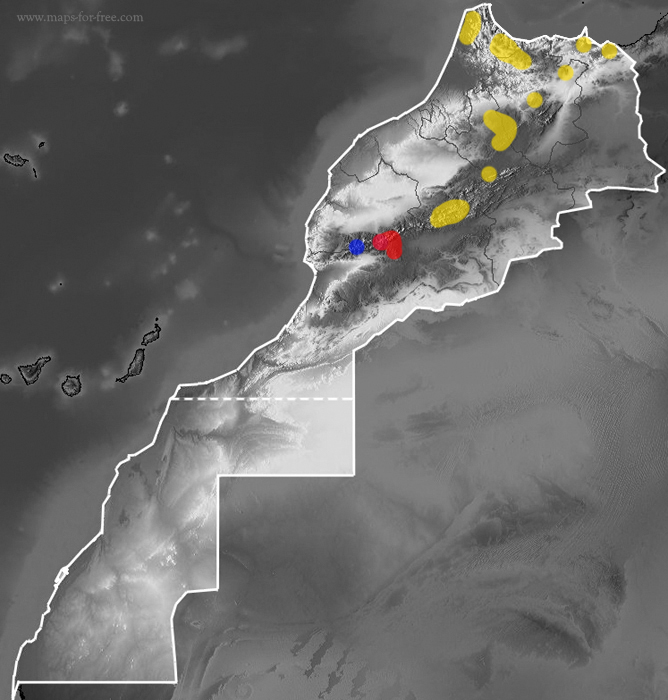
 V. m. monticola
V. m. monticola
 V. m. saintgironsi
V. m. saintgironsi
 V. m. atlantica
V. m. atlantica
Distribution map of Vipera monticola in Morocco.
Phylogenetic Frame
The Mountain Viper was considered a subspecies of the Horned Viper Vipera latastei (Saint Girons, 1954; Sochurek, 1979), until Beerli et al. (1986) elevated it to the rank of species for having a smaller number of dorsal scales in the center of the body (19 while V. latastei has 21-23), smaller dimensions (less than 40 cm) and a different dorsal pattern. However, posterior works with phylogenetic analysis again doubted on the specific range of Vipera monticola (Brito et al., 2006; 2008).
Subsequent work confirms that Vipera monticola as it was considered to be an invalid species, since molecular analyzes showed that it was a simple ecotype adapted to high mountains within the North African lineage of the latastei-monticola complex (Velo-Anton et al., 2012).
Freitas et al., (2018) made a phylogenetic analysis including more samples and suggested that the North African Vipera lineages deserved the consideration as a separate species from Vipera latastei, with 3 different lineages: 1) Riff Mountains, Middle Atlas and East from the High Atlas, Algeria and probably Tunisia; 2) The populations of the Tichka plateau and 3) the most genetically different of all, the populations of the High Atlas areas in front of Marrakech (Oukaimeden, Jbel Toubkal) and the Jbel Sirwa.
Finally the recent work of Martínez-Freiría et al., (2021) proposed that all North African populations of the genus Vipera should be considered Vipera monticola, describing two new subspecies: V. m. saintgironsi and V. m. atlantica respectively. In this way, V. latastei would currently be an Iberian endemism.
Description
V. monticola أفعى الأطلس , Mountain Viper or Vipère naine de l’Atlas, was considered the smallest viper in the genus Vipera Laurenti, 1728 with a maximum length of 345 mm (Spawls and Branch, 1995). However, while V. m. monticola and V. m. atlantica are subspecies of reduced size, specimens of V. m. saintgironsi may exceeded 50cm (although, however, there are also dwarf populations of V. m. saintgironsi in areas such as eastern Morocco or the Aures mountains of Algeria; Martínez-Freiría et al., 2021).
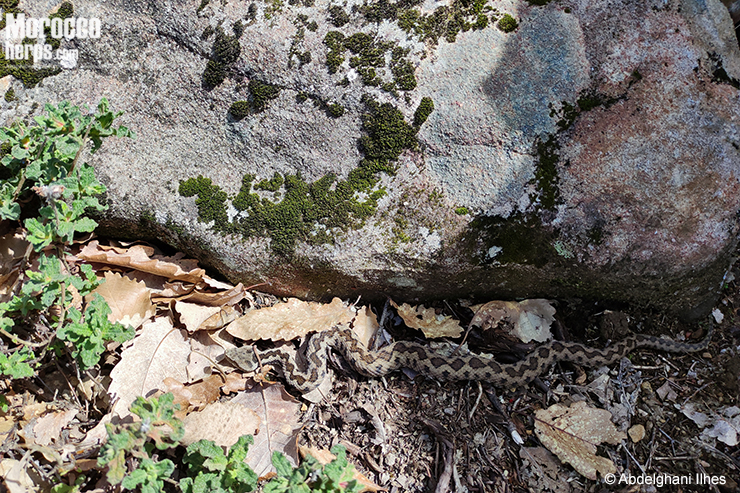
The head is large, well differentiated from the body, and with medium-sized, copper-colored eyes with black, vertical pupils. It features the large horn-shaped rostral scale as occurs in Vipera latastei. The supralabial scales often have small markings of the same color as the zigzag on the back. It is a solenoglyphous species and has two venom-inoculating teeth connected to cytotoxic venom glands.
It is a robust snake like most of the vipers of its genus. The scales are keeled, counting 19 mid-body scales in the nominate and atlantica subspecies, and 19-23 (often 21) in saintgironsi (Martínez-Freiría et al., 2021). The tail is short, differentiated from the body, longer in males and with a less abrupt base than females, often with black or yellow coloration.
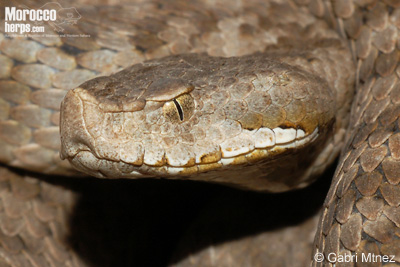
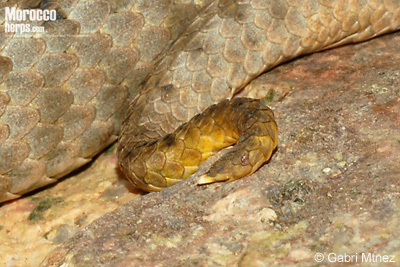
As in many of the species of the genus, males are usually greyish in color and females are brown in color. The nominal and atlantica subspecies show a dorsal pattern made up of a straight line that starts at the head and ends at the tail, and this line has transversal markings. The transverse markings when leaving the head are mixed with the line that runs along the dorsal part forming a zigzag, but soon after the markings are located parallel, clearly distinguishing themselves from the common wide zigzag in specimens of V. m. saintgironsi.
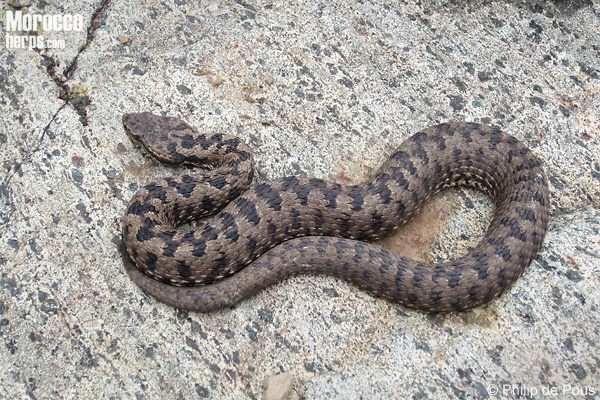
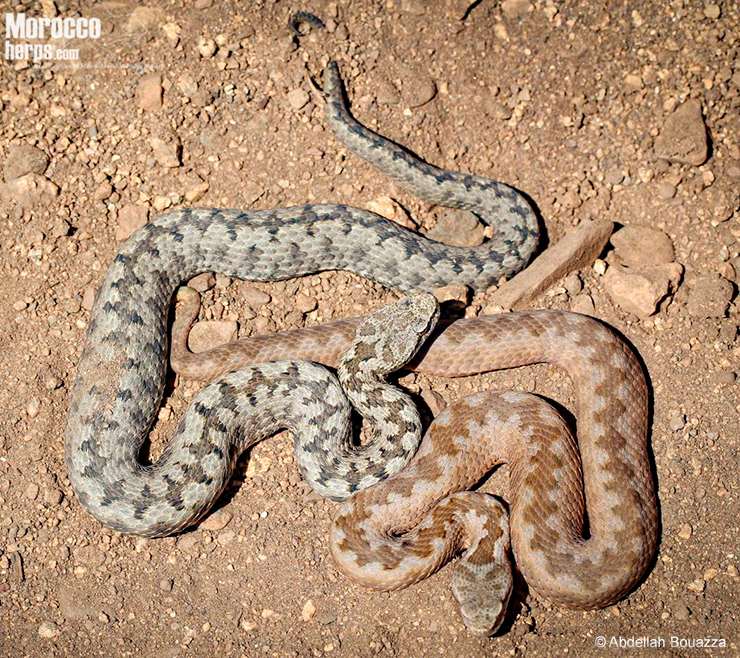
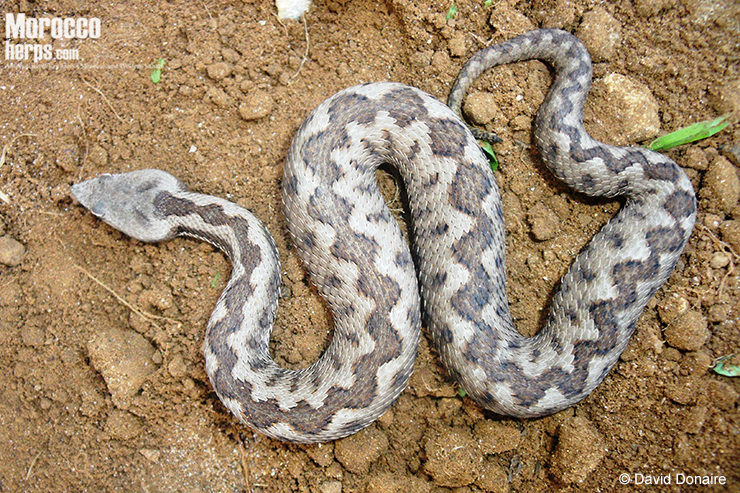
V. m. monticola and atlantica are similar in appearance, although atlantica is generally the one with the smallest size, and a higher number of intercantal and intrasupraocular scales, as well as ventral scales (for detailed information, see Martínez-Freiría et al., 2021).
Ecology and habits
The Mountain Viper is an eminently terrestrial species with apparently diurnal habits. It should only have a hibernation or diapause period in the coldest months, as activity has been observed between March and April even in high mountain areas in the High Atlas to November at 1800 m in the Rif mountains (Donaire et al., 2017; H. Iglesias, pers. comm.; Westerström, 2010).
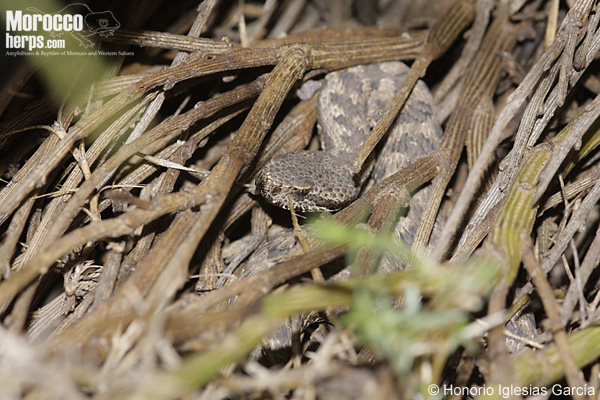
It is a viviparous species. In a study with two gravid females of the nominate subspecies, the maximum number of hatchlings was 4. At birth they measured a maximum of 13.5 cm (Scheich et al., 1996).
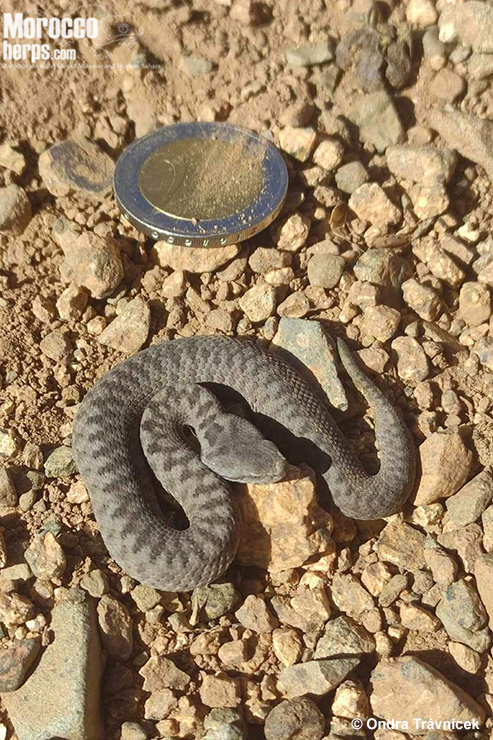
The nominate subspecies feeds on insects and reptiles (Chalcides montanus, Atlantolacerta andreanskyi, Quedenfeldtia trachyblepharus) and accepts small rodents in captivity (Schleich et al., 1996). For the capture of the fast Great Atlas day gecko Quedenfeltia trachyblepharus, the tail could serve as bait in the hunting technique known as caudal luring, described for Vipera latastei (Parellada and Santos, 2001; J. P. González de la Vega, pers. comm. ). The adults of the not dwarf populations of V. l. saintgironsi probably prey on larger species: birds or rodents (e.g. Apodemus sylvaticus as suggested by Martínez-Freiría et al., 2020).
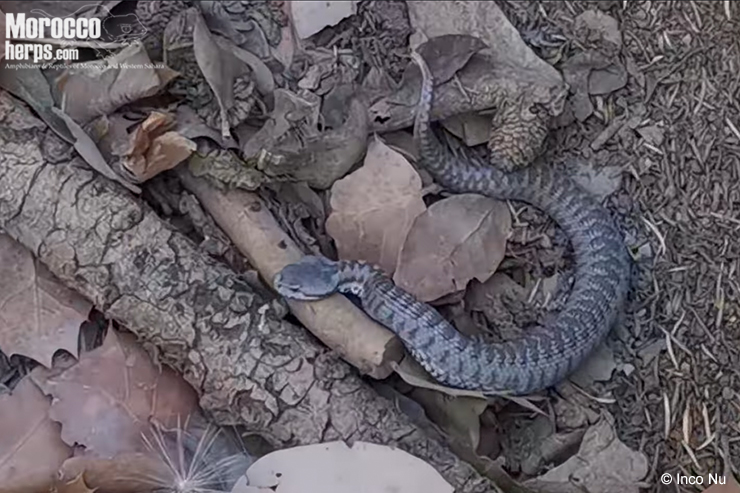
It has not been confirmed that they have predators. As a defense when disturbed, it usually tries to flee to the nearest refuge at great speed. If prevented from fleeing, it reacts like most vipers: it coils, hisses, and launches attacks at the would-be assailant.
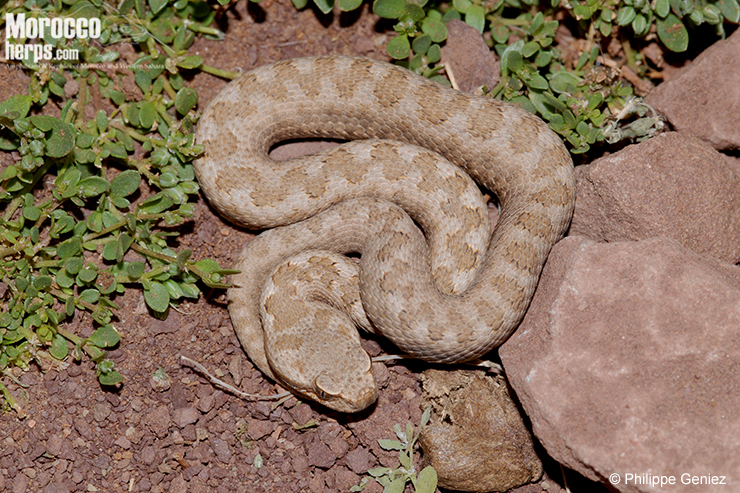
Distribution, habitat and abundance
V. m. monticola is an endemism of Morocco that inhabits the central zone of the High Atlas, in the Toubkal massif, between 1,200-4,000 m (Geniez et al., 1992; Bons and Geniez, 1996; Schleich et al., 1996; Phelps , 2010; Miras et al., 2011) and the Sirwa massif (Pillet, 1994; Slimani et al., 1996; Martínez-Freiría et al., 2017).
V.m. atlantica is a Moroccan endemism whose presence has only been confirmed in the Tichka plateau (West of the High Atlas, Marrakesh-Safi region). Studies are being made to understand the real distribution of this subspecies and its possible contact areas with V. m. monticola (F. Martínez-Freiría, pers. comm.).
V. m. saintgironsi has a larger distribution, including much of the Moroccan High Atlas (east), the Middle Atlas, the Rif Mountains, as well as possibly various isolated populations both in the rest of northern Morocco and in northern Algeria or Tunisia (in the phylogenetic studies weren´t included samples of some populations and there is still some uncertainty about them, such as those from Tunisia).
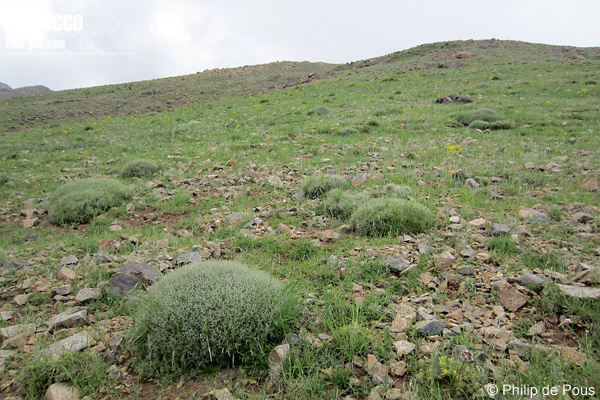
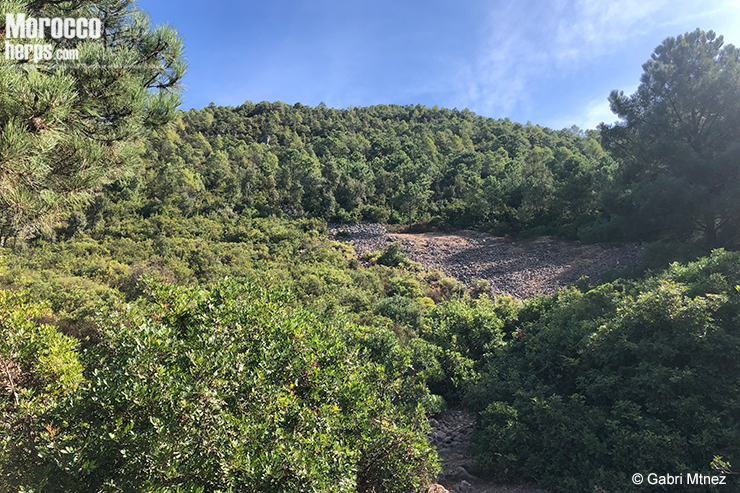
Nominal and atlantica subspecies are strictly montane Palearctic relicts that occupy the slopes, scree and rocky slopes with padded thorny shrubs in high mountain areas. Saintgironsi subspecies occupies more types of habitats and has been cited from sea level to more than 2000 masl, although, as with Vipera latastei in the south of the Iberian Peninsula, its presence is mainly limited to high mountain areas, inhabiting other areas, especially near streams, fountains and other aquatic points where it finds humidity, a higher density of prey and more shelters.
The survival of coastal populations of Vipera latastei in southern Iberia suggests that the Mountain Viper could also survive in well-preserved areas of the Moroccan coast, despite the fact that some studies consider populations such as Saidia to be possibly extinct (Martínez-Freiría et al. ., 2021).
For the nominate subspecies, according to the IUCN criteria, it is in a state of “Near Threatened” (NT; Miras et al., 2011). These authors expose the destruction of the habitat by felling trees as the main cause of the decline of this species. The author of this page fully agrees with these authors, and believe that the greatest threat factor for this species is the habitat destruction. It is a species dependent on well-preserved habitat. In Morocco, the transformation of forest areas into cultivated fields has not stopped increasing in recent years. Areas that have not been converted to agricultural areas often suffer from overgrazing, which in turn probably decreases their populations (by direct death at the hands of sheppers, and because cattle feed on the vegetation that serves as a refuge for the vipers, making them more vulnerable to predators in their movements; and the absence of vegetation idecreases the number of prey such as lacertids or skinks).
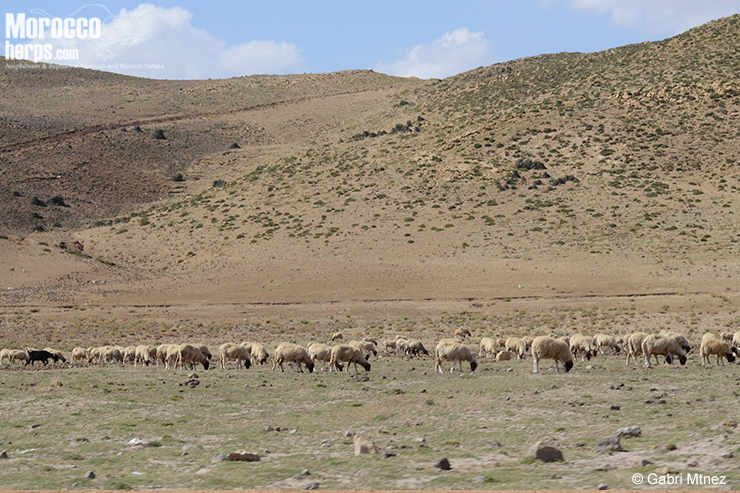
In the areas where it coincides with the Horseshoe Whip Snake (Hemorrhois hippocrepis) and the Montpellier Snake (Malpolon monspessulanus), as it happens in most areas of southern Iberia with Vipera latastei, the Mountain Viper is difficult to be found ( both alive and dead), which could be due to the strong pressure exerted by large snakes on these vipers in terms of trophic competition, and to the possible predation of the Montpellier Snake on the Mountain Viper (as has been published with Vipera latastei; Meijide, 2017). Studies reveal the expansion of the Montpellier Snake towards ever higher areas due to global warming in southern Iberia (Moreno-Rueda et al., 2009), which seems to be also happening in Morocco (Scaramuzzi et al., 2022), probably affecting more Mountain Viper populations with the time.
Ackowledgements
To Philippe Geniez, Philip de Pous, Abdellah Bouazza, David Donaire, Abdelghani Ilhes, Honorio Iglesias, Ondra Trávníček, Inco Nu and Fernando Martínez-Freiría for their photos or information.
References
- Beerli,P.; Billing,H. & Schatti,B. 1986. Taxonomischer Status von Vipera latasti monticola Saint Girons 1953 (Serpentes, Viperidae). Salamandra 22: 101-104
- Bons, J. & Geniez, P. 1996. Amphibiens et reptiles du Maroc (Sahara Occidental compris). Atlas Biogéographique. Asociacion Herpetologica Espanola, Barcelone. 319 pp.
- Brito, J.C.; Santos, X.; Pleguezuelos, J.M.; Fahd, S.; Llorente, G.A. & Parellada, X. 2006. Morphological variability of the Lataste’s viper (Vipera latastei) and the Atlas dwarf viper (Vipera monticola: patterns of biogeographical distribution and taxonomy. Amphibia-Reptilia 27 (2): 219-240
- Brito, J.C.; Santos, X.; Pleguezuelos, J.M. & Sillero, N. 2008. Inferring evolutionary scenarios with geostatistics and geographical information systems for the viperid snakes Vipera latastei and Vipera monticola. Biological Journal of the Linnean Society, 2008, 95, 790–806
- Dobiey, M. & Vogel, G. 2007. Venomous snakes of Africa. Edition Chimaira, Frankfurt. 148 pp.
- Donaire, D., Klusmeyer, B. & Jowers, M.J. 2017. On the presence of Lataste’s viper Vipera latastei Boscá, 1878 in the Central Rif, Morocco. Butlletí de la Societat Catalana de Herpetologia, 24: 39–41.
- Fahd, S.; Barata, M.; Benítez, M.; Brito, J.C.; Caro, J.; Carvalho, S.; Chirosa, M.; Feriche, M.; Herrera, T.; Márquez-Ferrando, R.; Nesbitt, D.; Pleguezuelos, J.M.; Reques, R.; Paz Rodríguez, M.; Santos, X.; Sicilia, M. & Vasconcelos, R. 2007. Presencia de la víbora hocicuda Vipera latastei en el Atlas Medio (Marruecos) y otras citas herpetológicas para la región. Bol. Asoc. Herpetol. Esp., 18, 26-34.
- Freitas I, Fahd S, Velo-Anton G, Martínez-Freiría F. 2018. Chasing the phantom: biogeography and conservation of Vipera latastei-monticola in the Maghreb (North Africa). Amphibia-Reptilia: DOI:10.1163/15685381-17000197.
- Geniez, P.; Ineich, I.; Ben Kirane, C. & Bons, J. 1992. Les serpents venimeux du Maroc: position systématique et état des connaissances sur leur distribution- Actes Inst. Agron. Vet., 12 (1): 37-48
- Martínez-Freiría, F., Bouazza, A., Buldain, J., Freitas, I., Avella, I., Scaramuzzi, A., Sioumpoura, K., Oliviera, D. & Fahd, S. 2023. Fieldwork campaigns and citizen science data increase the distributional range of the elusive Vipera monticola in Morocco. Basic and Applied Herpetology, 37: 000.
- Martínez-Freiría, F., Freitas, I., Velo-Antón, G., Lucchini, N., Fahd, S., Larbes, S., Pleguezuelos, J.M., Santos, X. & Brito J.C. 2021. Integrative taxonomy reveals two species and intraspecific differentiation in the Vipera latastei–monticola complex. Journal of Zoological Systematics and Evolutionary Research, 00, 1–29.
- Martínez-Freiría, F., García-Cardenete, L., Alaminos, E., Fahd, S., Feriche, M., Flores Stols, V., Jiménez Cazalla, F., Pérez, A., Pleguezuelos, J.M., Santos, S. & Velo Antón, G. 2017. Contribution to the knowledge on the reptile fauna of Jebel Sirwa (Morocco), with some insights into the conservation status of “Vipera latastei-monticola“. Boletín de la Asociación Herpetológica Española, 28 (1): 54-60.
- Meijide, M. 2017. Primera cita de depredación de Malpolon monspessulanus sobre Vipera latastei. Bol. Asoc. Herpetol. Esp., 28(1): 26-28.
- Miras, J.A.M.; Joger, U.; Pleguezuelos, J.; Slimani, T. & El Mouden, H. 2006. Vipera monticola. In: IUCN 2011. IUCN Red List of Threatened Species. Version 2011.1. . Downloaded on 07 July 2011.
- Moreno-Rueda, G., Pleguezuelos, J.M. & Alaminos, E. 2009.
Climate warming and activity period extension in the
Mediterranean snake Malpolon monspessulanus. Climatic
Change, 92: 235–242. - Parellada, X. & Santos, X. 2002. Caudal luring in free-ranging adult Vipera latasti. Amphibia-Reptilia 23 (3): 343-347
- Phelps, T. 2010. Old World Vipers. Edition Chimaira. 562 pp.
- Pillet, J. M. 1994. Nouvelles données sur la répartition et l’écologie de la Vipère naine du Haut Atlas Vipera monticola Saint Girons, 1954 (Reptilia, Viperidae). Rev. Suisse Zool., 101, 3, 645-653.
- Saint Girons, H. 1954. Note rectificative au sujet de Vipera latastei montana, n. subsp. Bull. Soc. Zool France 78: 475
- Scaramuzzi, A., Avella, I., Lansari, A., Bouazza, A. & Martínez-Freiría, F. 2022. New high-elevation records of Malpolon monspessulanus and Hemorrhois hippocrepis from the High Atlas Mountains (Morocco). Boletín de la Asociación Herpetológica Española, 33: 7-11.
- Schleich, H. H.; Kastle, W. & Kabisch, K. 1996. Amphibians and Reptiles of North Africa. Koeltz Scientific Publishers, Koenigstein. 630 pp.
- Slimani, T.; Boumezzough, A. & Bons, J. 1996. Nouvelles observations sur l’herpétofaune marocaine ; 6 : Le massif du Sirwa et le versant méridional du Haut-Atlas. Bull. Soc. Herpétol. Fr., 79, 15-21.
- Sochurek,E. 1979. Die Schlangen Nordafrikas. Mitt. Zool. Ges. Braunau 3 (8/9): 219-226
- Spawls, S. & Branch, B. 1995. The Dangerous Snakes of Africa. Ralph Curtis Books. Dubai: Oriental Press. 192 pp.
- Velo-Antón G, Godinho R, Harris J, Santos X, Martínez-Freiría F, Fahd S, Larbes S, Pleguezuelos JM, Brito JC. 2012. Deep evolutionary lineages in a Western Mediterranean snake (Vipera latastei/monticola group) and high genetic structuring in Southern Iberian populations. Molecular Phylogenetics and Evolution, 65 (3): 965-973.
- Westerström, A. 2010. Early record of the elusive Atlas Dwarf Viper Vipera monticola SAINT GIRONS, 1953, in the Moroccan High Atlas Herpetozoa 23_1_2: (2010)103- 104
To cite this page:
Gabriel Martínez del Mármol (2023): Vipera monticola Saint Girons, 1953. In: Martínez, G., León, R., Jiménez-Robles, O., González De la Vega, J. P., Gabari, V., Rebollo, B., Sánchez-Tójar, A., Fernández-Cardenete, J. R., Gállego, J. (Eds.). Moroccoherps. Anfibios y Reptiles de Marruecos y Sahara Occidental.
Disponible en www.moroccoherps.com/ficha/Vipera_monticola/. Version 18/01/2023.
To cite www.morocoherps.com as a whole:
Martínez, G., León, R., Jiménez-Robles, O., González De la Vega, J.P., Gabari, V., Rebollo, B., Sánchez-Tójar, A., Fernández-Cardenete, J.R., Gállego, J. (Eds.). Moroccoherps. Anfibios y Reptiles de Marruecos y Sahara Occidental.
Available in www.moroccoherps.com.
